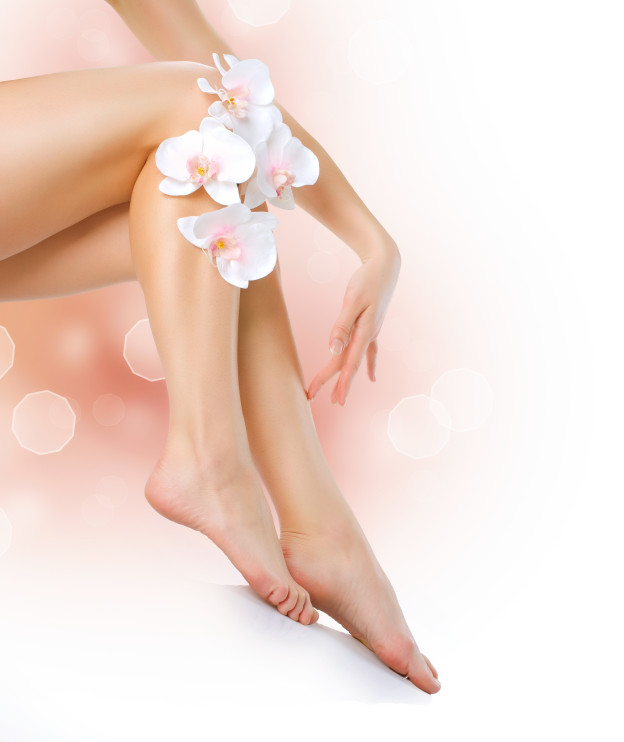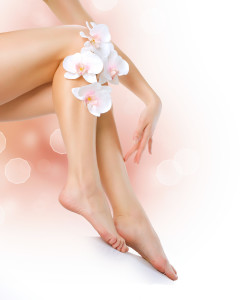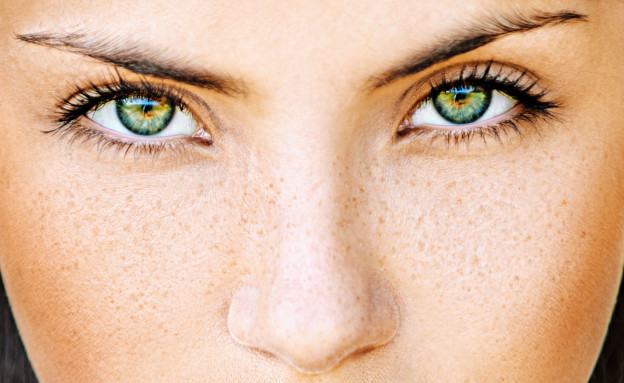If you’ve admired celebrities in the latest swimwear, you are likely to have noticed something they have in common — great-looking skin! Sure, at first glance, you probably checked out your favorite celebs’ super-hot bods. But celebrities share another beauty trait, namely having beautiful, even, radiant skin tone that keeps them looking amazing in the scantiest of swimwear.
Treatment for spider veins and broken blood vessels can help make your skin look clear, beautiful, evenly toned, and young.
What are spider veins?
Spider veins (or capillaries) are the small, red and blue veins just beneath the surface of skin. They often are visible on the face, chest (or décolletage), legs, and feet beneath the anklebone. In most cases, spider veins only cover small areas; but when they spread, spider veins can make skin look blotchy, reddish, and bluish. In some cases, spider veins look like a permanent bruise.
Spider veins result from weak and damaged valves in blood vessels. The damaged valves allow blood to flow backward in the vessel, a process that puts extra pressure on the vessel. Over time, the extra pressure enlarges the little veins (or capillaries) and they burst. The tiny broken veins spread out just under the skin, often looking like a spider’s web.
Spider veins are very common. In fact, most people have spider veins somewhere on the body by the time they are in their 30s. People of all skin types can have spider veins.
Spider veins can result from:
- Age
- Being overweight and obese
- Crossing or bending the legs for long periods
- Genetic predisposition for varicose veins
- Hormonal changes during puberty, pregnancy, and menopause
- Medications, including birth control pills that cause hormonal changes
- Sitting or standing too long
- Sun exposure, especially on the face
Treating Spider Veins
The latest laser therapy techniques allow plastic surgeons to direct laser light through the skin and target spider veins. The laser-light treatment heats vein tissue and makes it swell similar to the way skin swells from a sunburn. The swollen vein walls then stick together and close off, stopping the flow of blood through the vein. Without bloodflow to keep the tissue alive, the vein dies, turns to scar tissue, and begins to fade away.
Laser spider vein treatment is typically relatively quick — 15 to 20 minutes. It can be administered in the office. Many people have 2 to 5 treatments to completely remove spider veins in the legs.
Not all skin types are appropriate for laser spider vein treatment; but a Surgeon Network expert can tell you which therapy is best for treating your spider veins.
Sclerotherapy is another treatment that also can help eliminate spider veins. Sclerotherapy involves injecting spider veins with a chemical. Just like with laser therapy, the chemical causes the tissue of the vein to swell. The walls of the vein then stick together, sealing the vein shut so that blood cannot flow through it. Without blood, the vein soon turns into scar tissue and fades away.
After Spider Vein Treatment
If you have sclerotherapy to treat your spider veins, you might experience mild stinging, redness, raised patches of skin, or bruises. Each of these symptoms are temporary and usually resolve within only days. Some people also get spots or brown lines in the treated area, but the spots or lines also will disappear relatively quickly. Once you have completely healed from your laser spider vein treatment, your skin tone will appear even and clear and you can enjoy a more youthful appearance to the skin on your face, chest, legs, and feet.
Surgeon Network physicians are adept at laser treatment for spider veins.
Talk with a Surgeon Network expert today and find out how spider vein treatment
can give you clear, radiant, young-looking skin.












